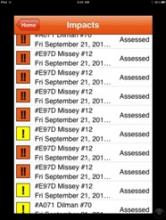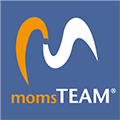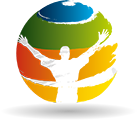
Question: Aren't there those in the concussion community who do not see impact sensors as currently having any practical utility beyond their use in research?
Answer: Absolutely. As with any emerging technology, there will be early adopters and late adopters. Not surprisingly, some concussion scientists and researchers take a more cautious approach to the use of impact sensors than others. Despite finding that underreporting continues to be what she wrote in two 2013 studies to be an "alarming" and "overwhelming" problem, Johna Register-Mihalik, Ph.D, LAT, ATC, Senior Research Associate at WakeMed and Adjunct Assistant Professor at UNC-Chapel Hill, recently told MomsTEAM that the reason she and her colleagues did not recommend the use of impact sensors in addressing the problem was that she viewed "the use of impact sensors in concussion detection, as the science, although a growing field of information, [as] just not quite there in [terms of] how the[y] may best be used from a clinical standpoint and across all sport settings."
Register-Mihalik recognized that "there is certainly potential for this type of technology to have great implications in the identification of concussion as the science advances," but, she argued, "we need more scientific and unbiased evidence of their ability to detect concussion before they are widely used and recommended in all settings. Until that time, there are some good examples of identification techniques of having trained observers, a parent advocate and continuing to promote concussion education that we know will increase identification rates."
Note, however, that Register-Mihalik was assuming that impact sensors would be used to diagnose concussions, which, as noted above, is not their intended use.
Question: Isn't another reason against the use of impact sensors that, if they don't trigger an alarm or alert, sideline personnel may be lulled into thinking that the athlete has not suffered a concussion, and thus can safely continue playing?
Answer: Yes, such a potential concern has been expressed by some concussion experts. They worry that sensors may identify individuals who receive a certain type of hit or impact, but that impacts not above the threshold may nevertheless lead to concussion, providing a false sense of security, in that "if the sensor didn't go off, I must not have a concussion."
The problems of false negatives (i.e. the sensor not going off when the athlete is later found to have suffered a concussion), and false positives (i.e. the sensor triggering an alert when the athlete is later found not to have suffered a concussion) are real concerns. Their effect can be minimized, however, if sideline personnel remember to always keep in mind that the sensors are not diagnostic and simply provide additional information for use by sideline personnel in identifying athletes for sideline screening and/or close observation.
Question: Are there controlled studies showing that impact sensors significantly improve concussion identification, and, if there aren't, shouldn't we wait to start using them until there are?
Answer: It is true that there are, as of yet, no controlled studies showing that a team which adds impact sensors to its concussion toolbox helps sideline personnel do a better job of identifying concussed athletes than a team that relies on self-reporting by athletes and the observational skills of sideline personnel and game officials.
My own anecdotal experience so far, however, has been positive. While only a limited number of helmets of Newcastle football players were fitted with Shockbox sensors for the 2012 season we filmed for "The Smartest Team," the results, admittedly from a very small sample size, were very encouraging:
- Newcastle's athletic trainer, Damon Glass, ATC, told me that the sensors were "the next best thing to being inside the [players'] brain basically and seeing the hit, because if I don't know whether it happens, there's lots of times I've been away from the play and never saw it, and I don't know if they've taken a hit or not. So it's gonna be the best thing for me to have a tool, you know, to assess them if they do take a big hit."
- One of the Newcastle players, Collin Black, admitted to me that, "A lot of the guys, they don't want to come out when they get a concussion, and they know they have one, so the sensors, they don't really give them an option. When that sensor goes off, you got hit hard and the coaches are gonna pull you out no matter what. You can't hide it from them."
- Another, Sheldon Dillman, said, "Previously, if you got hit and you were just pumped with adrenaline, you might not even feel it until the next quarter. So now at least, you know, if you get hit and the athletic director gets an alert, then they know, hey you need to take a break. That'll do a big part [to improve safety] in football."
- And a third Newcastle Racer, Chase Prudhome, told me he was glad that the sensors were being used: "It's helped a lot of kids out. We've actually had two of the kids come out of the game with their helmets going off, and they really did have a bad concussion. When the sensors went off, we have a girl that's always on the iPad waiting for the sensors to go off, and she goes over to our trainer, wh[o] goes to the coaches and they get them off the field as quickly as possible."
- Many of the players, in a private conversations, told me quite frankly, that "we do not want to have the responsibility of reporting our concussions any longer. We want the sensors."
I am not a scientist, nor a biomechanical engineer. As such, I recognize and appreciate that there are some in the concussion community, especially scientists - who by their very nature are appropriately cautious in endorsing any new technology without validation via rigorous, peer-reviewed testing - and some helmet manufacturers who believe that impact sensor technology has not advanced sufficiently to warrant widespread use in contact and collision sports. Again, it appears that their objections rest largely on the assumption that they are going to be used to diagnose concussions, which is not their intended use.
My experience with the Newcastle football team in Oklahoma leads me to believe that, as long as impact sensors are strictly used for the limited purpose of providing real-time impact data to sideline personnel, not to diagnose concussions, not as the sole determining factor in making remove-from-play decisions, and not to replace the necessity for observers on the sports sideline trained in both the signs and symptoms of concussion and in conducting a sideline screening for concussion using one or more sideline assessment tests for concussion (e.g. SCAT3, balance, King-Devick, Maddocks, SAC)(preferably by a certified athletic trainer and/or team physician), they represent a valuable addition to a program's concussion toolbox.
Question: I have heard that installing an after-market third-party sensor inside a football helmet, or on the exterior of such helmet, will void the NOCSAE certification and/or the manufacturer's warranty. Is that true?
Answer: That's a hard question to answer yes or no.
The short answer is that whether an after-market impact sensor manufactured by a third-party voids the NOCSAE warranty will depend on (a) whether it is affixed to the inside or outside of a helmet (some are, some are not); (b) whether the helmet manufacturer has decided that the impact sensor voids the NOCSAE certification; and (c) whether the impact sensor manufacturer has made their own certification of compliance with the NOCSAE standard on a helmet model.
The long answer is that, it is true that the National Operating Committee on Standards for Athletic Equipment (NOCSAE) initially decided in July 2013 that modification of helmets with third-party after-market add-ons, such as impact sensors installed inside a helmet or to its exterior, would be viewed as voiding its certification, and that the certification could only be regained if the helmet was retested by the manufacturer with the add-on, it subsequently, NOCSAE issued a press release clarifying that position: Instead of automatically voiding the certification, NOCSAE decided it would leave it up to helmet manufacturers to decide whether a particular third-party add-on affixed to the helmet, such as a impact sensor, voided its certification, and now allows companies which make add-on products for football helmets to make their own certification of compliance with the NOCSAE standards on a helmet model, as long as the certification is done according to NOCSAE standards, and as long as the manufacturer assumes responsibility (in other words, potential legal liability) for the helmet/add-on combination.
An additional complicating factor for high school football programs is the question of whether a football helmet to which an impact sensor has been affixed violates the rules of the National Federation of State High School Associations (NFHS) or of a state high school athletic association. Article 1, Rule 1‐5.1.a. of NFHS's rule entitled "Mandatory equipment" states, in pertinent part, that a participating football player must "wear a properly fitted helmet ... which shall be professionally manufactured and not altered to decrease protection, ...[and] which met the NOCSAE test standard at the time of manufacture." (emphasis supplied).
A strict reading of that language would appear to allow a helmet to which a third-party, after-market product has been affixed so long as the alteration does not "decrease protection," and so long as the helmet met the NOCSAE test standard at the time it left the manufacturer. MomsTEAM has repeatedly requested that the NFHS clarify its interpretation of this rule in light of the NOCSAE statements but, as of October 10, 2013, the NFHS has not issued one.
I should also note that, when liability and warranty concerns were raised during the filming of "The Smartest Team" in the summer of 2012, both by the school's attorney and by Schutt, we moved swiftly to address them by having a Shockbox-equipped Schutt helmet drop-tested at Schutt's testing facility. When the testing showed that the insertion of the 3 1/2 ounce sensor in between sections of the interior padding of the Schutt helmet did not in any way effect its performance characteristics, Schutt was able to assure the school that the helmet modification did not void its warranty, and we were able to proceed. Similar arrangements have been put in place to allow even more players on the 2013 Newcastle football team to play with impact sensors this season.
Question: What is your bottom line recommendation regarding the use of impact sensors in light of the NOCSAE statement?
Answer: In the final analysis, while NOCSAE has every right to protect the integrity of its standards, it should be up to market to determine winners and losers, with as little government or private interference in that process as possible, so that the best company with the best technology wins. That's called free enterprise.
Hopefully, the new NOCSAE ruling will not bring technological innovation to a screeching halt, and will be no more than a speed bump on the road to improved player safety.
In the meantime, we believe it should be up to schools, coaches, parents, athletic trainers, team doctors, and the athletes themselves to weigh the benefits and risks of impact sensors, and make the decision that is most likely to improve player safety, NOCSAE certification or no.
For an impact sensor buying guide, click here.
Brooke de Lench is the Executive Director and Founder of MomsTEAM Institute, Founder and Publisher of MomsTEAM.com, and producer/director of the new PBS documentary, "The Smartest Team: Making High School Football Safer," and author of "Home Team Advantage: The Critical Role of Mothers in Youth Sports (HarperCollins). For a full biography, click here.
Questions or comments? Email Brooke at delench@momsteam.com



